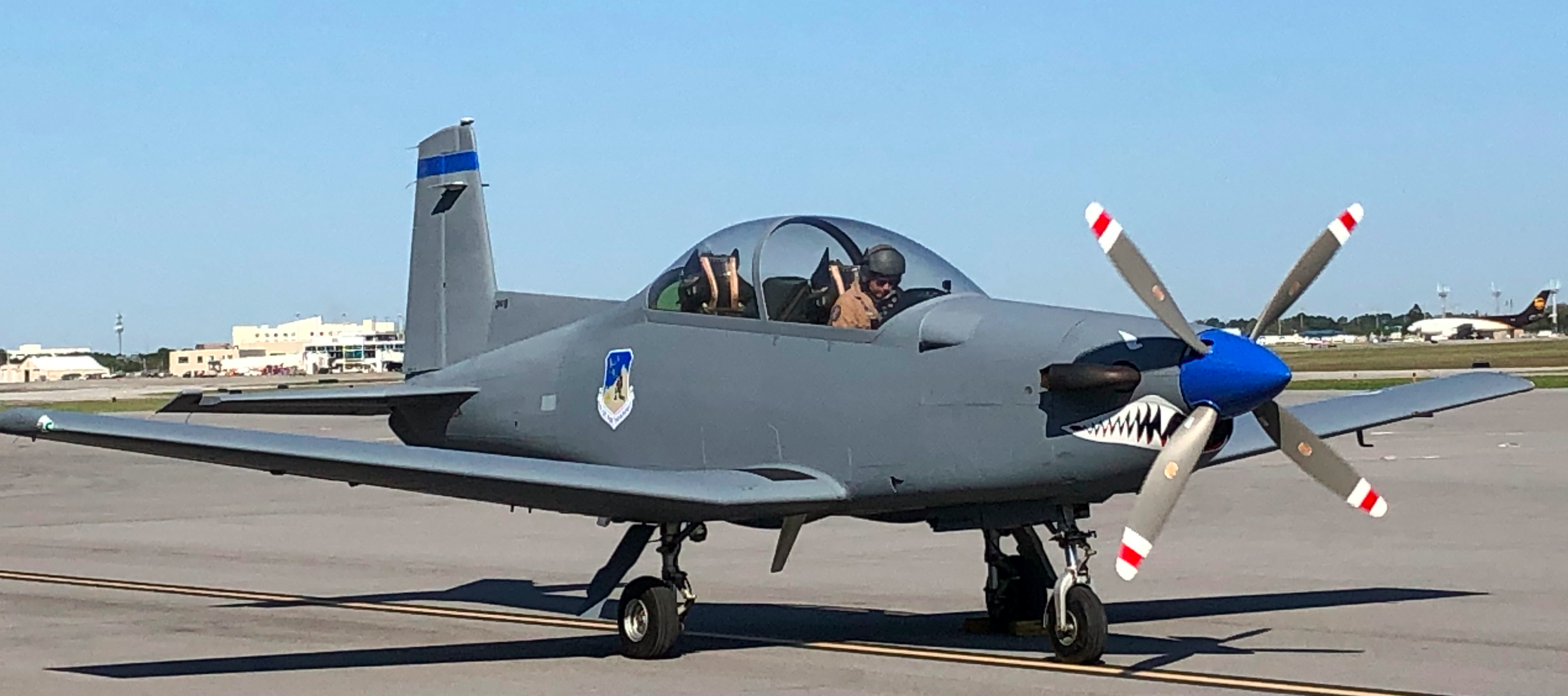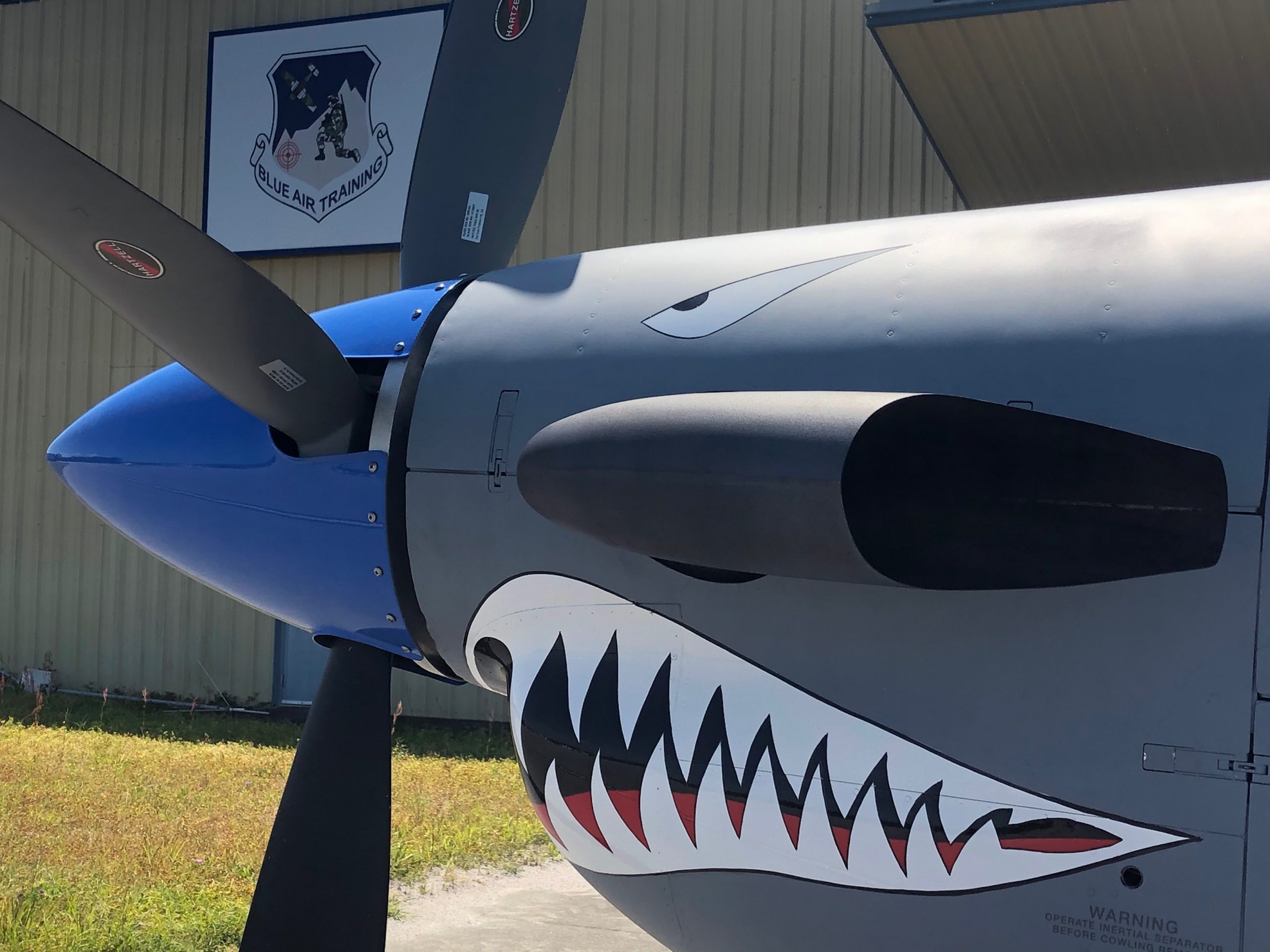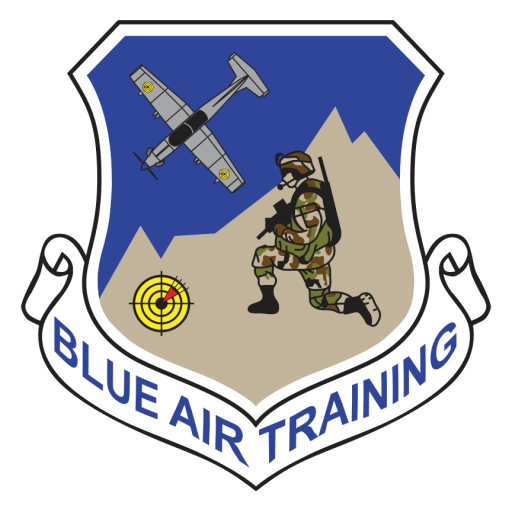PC – 9 A / F

The PC-9 is designed by Pilatus Switzerland and built under license by Hawker de Havilland in Sydney. It was introduced to the Royal Australian Air Force (RAAF) in 1987, with pilot training commencing in 1989. It has established itself as the leader amongst military trainers in its class. The PC-9 offers a broad training spectrum, modern cockpit environment, agility, and engine performance.

The Pilatus PC-9 aircraft has been providing excellent service to the Australian Defence Force (ADF) for the past 30 years, training thousands of aircrew from Army, Navy and Air Force. Blue Air Training acquired six PC-9 aircraft in March 2020.
CAPABILITIES AND PERFORMANCE
General characteristics
Crew: 1 Pilot / 1 MSO
Dimensions: 33 ft long x 33 ft wingspan x 11 ft tall
Max Gross Weight: 5,940 lbs with external stores
Powerplant: Pratt & Whitney PT-6A-62 turboprop engines
Upgraded advanced avionics and glass cockpit to include ADS-B and satellite weather
Night and Loft delivery capable
Performance
Cruise speed: 300 KTAS
Maximum Speed (VMO ): 320 KIAS / 419 KTAS
Climb: 4,100 feet per minute
Range: 830 NM (2 x weapons stores / 2 x fuel tanks at 20,000 feet)
Endurance: 5.0+ hours
Service ceiling: FL380
Armament
6 x Hardpoints, capable of carrying:
Bombs: MALTS-4 Smart Weapons Rack, 4 x BDU-33 or 2 x Laser Guided training Rounds (LGTR) per bomb rack
Gun: 550 rounds of 7.62mm per Light Gun Pod (LGP)
Rockets: 7 x 2.75” Rockets per LAU-131 rocket pod
Extended range external fuel tanks
Communications
Link-16 for Digitally aided Close Air Support (DaCAS)
Multiband UHF/VHF/FM radios provide pilots with seamless communications with the airmen on the ground with additional VHF communications
Cursor On Target communications NAV suite allows the crew to execute DaCAS at night
SETTING A NEW TRAINING STANDARD
With our new fleet of PC-9 aircraft, Blue Air Training will lead the way in providing the best and most cost-efficient training experience for our clients’ personnel to perform the difficult but essential mission of calling in Close Air Support on current and future battlefields.
